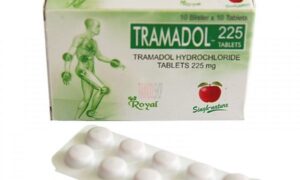Muscle soreness, joint stiffness, and chronic aches are familiar discomforts for millions of people. In the search for relief, more and more individuals are turning away from synthetic pharmaceuticals in favor of gentler, more sustainable options—like a natural topical pain relief cream. But not all creams are created equal. What separates an effective natural product from the rest?
Let’s explore the essential ingredients, mechanisms of action, and qualities that make a natural topical pain relief cream genuinely effective.
Understanding Topical Pain Relief
Topical pain relief works through direct application to the skin over affected areas. This localized approach avoids systemic side effects commonly associated with oral medications. Natural topical pain relief creams deliver active ingredients through the skin, where they interact with tissues, muscles, and nerves to reduce inflammation, dull pain, or soothe irritation.
Why Go Natural?
The demand for natural alternatives has grown rapidly. Consumers are increasingly aware of the side effects of long-term NSAID use and the risks of prescription opioids. Natural topical pain relief creams offer a safer, plant-based approach. These formulations often avoid synthetic chemicals, parabens, and artificial fragrances, making them ideal for people with sensitive skin or chemical sensitivities.
Key Ingredients That Define Effectiveness
The power of a natural topical pain relief cream lies in its ingredients. Here are the most scientifically supported natural compounds commonly found in effective formulations:
- Menthol
Derived from peppermint, menthol provides a cooling sensation that distracts from deeper pain. It also increases blood flow to the area, which helps reduce inflammation and speed up healing.
- Camphor
This compound stimulates nerve endings and provides both a warming and cooling sensation. It helps reduce pain, muscle stiffness, and inflammation, making it ideal for arthritis or strains.
- Capsaicin
The active component in chili peppers, capsaicin works by depleting substance P, a neuropeptide that transmits pain signals to the brain. It’s particularly effective for nerve pain and chronic conditions like shingles or diabetic neuropathy.
- Arnica Montana
A popular homeopathic remedy, arnica has anti-inflammatory and analgesic properties. It’s often used to reduce swelling, bruising, and muscle soreness from overexertion or injury.
- Turmeric (Curcumin)
Known for its anti-inflammatory properties, curcumin (the active compound in turmeric) inhibits inflammatory enzymes and has been shown to ease joint pain in conditions like arthritis.
- CBD (Cannabidiol)
Non-psychoactive CBD from hemp interacts with the body’s endocannabinoid system to modulate pain and inflammation. It’s gaining popularity for chronic pain relief and skin-calming effects.
- Eucalyptus Oil
Often used for respiratory relief, eucalyptus oil also contains eucalyptol, which can relieve pain and reduce inflammation when applied topically.
- Boswellia Serrata (Indian Frankincense)
This resin extract contains boswellic acids, which inhibit the inflammatory enzyme 5-LOX and may help with arthritis pain and mobility.
Mechanisms of Action: How Do These Ingredients Work?
An effective natural topical pain relief cream doesn’t just mask pain—it works in several complementary ways:
- Counterirritation: Ingredients like menthol and camphor produce sensations that distract the brain from underlying pain.
- Anti-inflammatory Effects: Compounds like turmeric, arnica, and boswellia help suppress inflammation, which is often the root cause of pain.
- Analgesic Action: Some ingredients reduce nerve signal transmission, lessening the perception of pain.
- Improved Circulation: Certain components boost blood flow to the area, aiding in tissue repair and toxin removal.
These multi-faceted effects provide holistic pain relief without needing high systemic doses of medication.
What Else Matters in a Natural Cream?
Ingredients are crucial, but they’re only part of the equation. Several other factors determine whether a natural topical pain relief cream is truly effective:
- Absorption and Bioavailability
An effective cream needs to penetrate the skin barrier. The best formulas use carrier oils or emulsifiers that help deliver active ingredients deep into muscles and joints rather than simply sitting on the surface.
- Consistency and Texture
Too greasy? It won’t absorb well. Too thin? It may not stay on long enough. A good cream strikes a balance—easily spreadable, fast-absorbing, and non-sticky.
- Purity and Quality
High-quality natural creams avoid fillers, synthetic additives, and artificial scents. Look for products that use organic or wildcrafted ingredients and clearly list their sources.
- Third-Party Testing
If a cream claims to contain CBD, for example, verify that with a Certificate of Analysis (COA) from an independent lab. This ensures the concentration is accurate and free from contaminants like heavy metals or pesticides.
- Scent Sensitivity
While natural, essential oils can still irritate sensitive users. The best products offer unscented or lightly scented versions to cater to individual needs.
Types of Pain That Natural Topical Creams Can Help With
Natural creams are surprisingly versatile. Depending on the formulation, they may be effective for:
- Muscle Strains & Sports Injuries: Fast-acting ingredients like arnica, menthol, and eucalyptus can help post-workout soreness or minor injuries.
- Arthritis & Joint Pain: Anti-inflammatories like turmeric, boswellia, and CBD can reduce swelling and stiffness.
- Back and Neck Pain: Natural creams can help relax tight muscles and provide lasting relief.
- Neuropathic Pain: Capsaicin and CBD are particularly useful for shooting, tingling pain from nerves.
- Menstrual Cramps: Some formulations with warming botanicals help relieve lower abdominal pain.
How to Choose the Right Product
When selecting a natural topical pain relief cream, consider your specific needs:
- Quick Relief vs. Long-Term Relief: Menthol and camphor offer rapid results but may fade quickly. CBD and curcumin may build effects over time.
- Day vs. Night Use: Some people prefer stronger scents during the day but need unscented or milder formulas for nighttime use.
- Allergy Concerns: Always review ingredients carefully if you have known sensitivities. Patch testing before wide use is a good idea.
Are There Any Risks?
Generally, natural topical pain relief creams are very safe. However, some precautions include:
- Skin Irritation: Even natural compounds can cause rashes or reactions, especially if essential oils are used in high concentrations.
- Drug Interactions: If you’re on blood thinners, talk to your doctor before using creams with turmeric or arnica.
- Open Wounds: Don’t apply creams to broken skin unless the product explicitly says it’s safe for that use.
Final Thoughts
The effectiveness of a natural topical pain relief cream depends on a strategic combination of active ingredients, quality formulation, and the user’s specific needs. With a growing shift toward holistic and natural wellness, these creams are proving themselves to be not just alternatives—but highly viable first choices for pain management.
Whether you’re dealing with chronic joint pain, athletic soreness, or occasional aches, nature has provided a powerful toolkit. By understanding what to look for in a cream, you can make informed decisions and find fast, sustainable relief—right where it hurts.



































